A cat tail is a long, slender appendage that extends from the base of a cat’s spine. It is covered in fur and is an important part of a cat’s anatomy. The cat tail serves several functions for our feline friends.
It helps with balance, allowing cats to make quick and precise movements. Here we will take a deep dive into the variations of the average cat tail lengths. We will explore how breeds and genetic factors impact their tails’ size and shape. Additionally, we will shed light on the anatomy of a cat’s tail and its importance. We’ll answer questions like why cats have such long tails and how it affects their behaviour.

Factors Influencing The Average Cat Tail Length – A Brief Overview
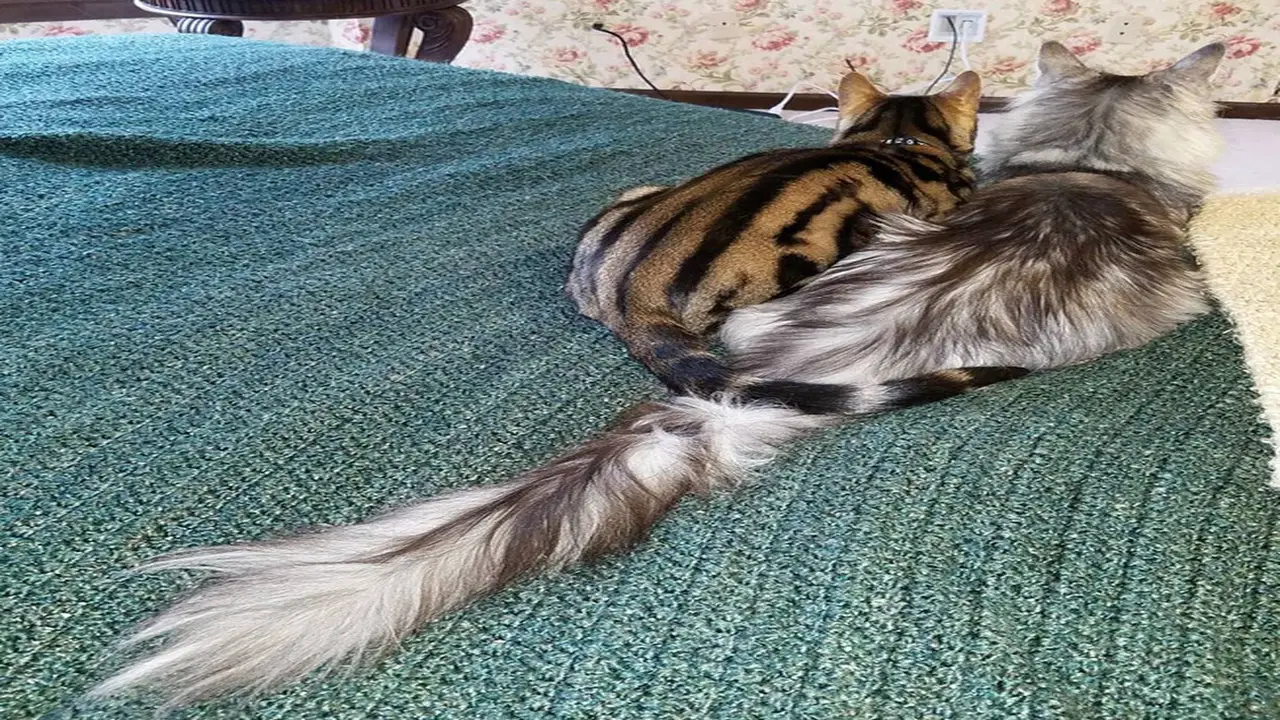
The average cat tail length is approximately 30 centimetres. However, it is important to note that cat tail lengths can vary depending on the breed and individual cat. Some cats may have shorter tails, while others may have longer ones
Genetic factors determine the length of a cat’s tail, which can vary across different breeds. For example, the Manx breed is known for its naturally short or absent tail due to a genetic mutation. Additionally, mutations in the tailless gene can also influence tail length. Domestic cats generally have longer tails than their wild counterparts.
Interestingly, certain breeds, like Siamese, have an average longer tail length than others. These genetic variations and mutations contribute to the diverse cat tail lengths observed. However, it’s important to note that while the tail length may differ among breeds, it does not necessarily affect a cat’s behaviour or personality.
Influence Of Breed On Tail Length

Different cat breeds display unique characteristics, including variations in tail length. Breeds such as the Maine Coon and Ragdoll are known for their long, flowing tails contributing to their majestic appearance. On the other hand, short-tailed breeds like the Japanese Bobtail and American Bobtail have a distinct look.
Siamese cats have medium-length tails that perfectly complement their sleek bodies. Considering a cat’s breed, one can gather valuable clues about its tail length and overall physical attributes.
Genetic Factors Impacting Tail Length
Genetic factors determine the tail length in cats. Certain genes can cause mutations that result in shorter or longer tails. This is evident in breeds like the Manx and Cymric, where a genetic mutation causes taillessness. On the other hand, breeds like the Maine Coon and Norwegian Forest Cat have genes for longer tails. Understanding the genetic basis of tail length helps shed light on the diversity of cat tails.
Anatomy Of A Cat’s Tail
A cat’s tail comprises vertebrae, tendons, and ligaments, contributing to its flexibility and range of motion. Different breeds exhibit varying tail lengths and shapes, showcasing the diversity within the feline population. The Maine Coon breed, for instance, is known for its long and fluffy tail, while breeds like the American Bobtail have naturally short or bobbed tails.
Selective breeding also plays a role in tail length, allowing cat fanciers to influence the characteristics of a breed’s tail. From the elegant Maine Coon to the distinctive American Bobtail, a cat’s tail size and shape are key elements of its overall anatomy.
The Role Of A Cat’s Tail In Balance And Communication
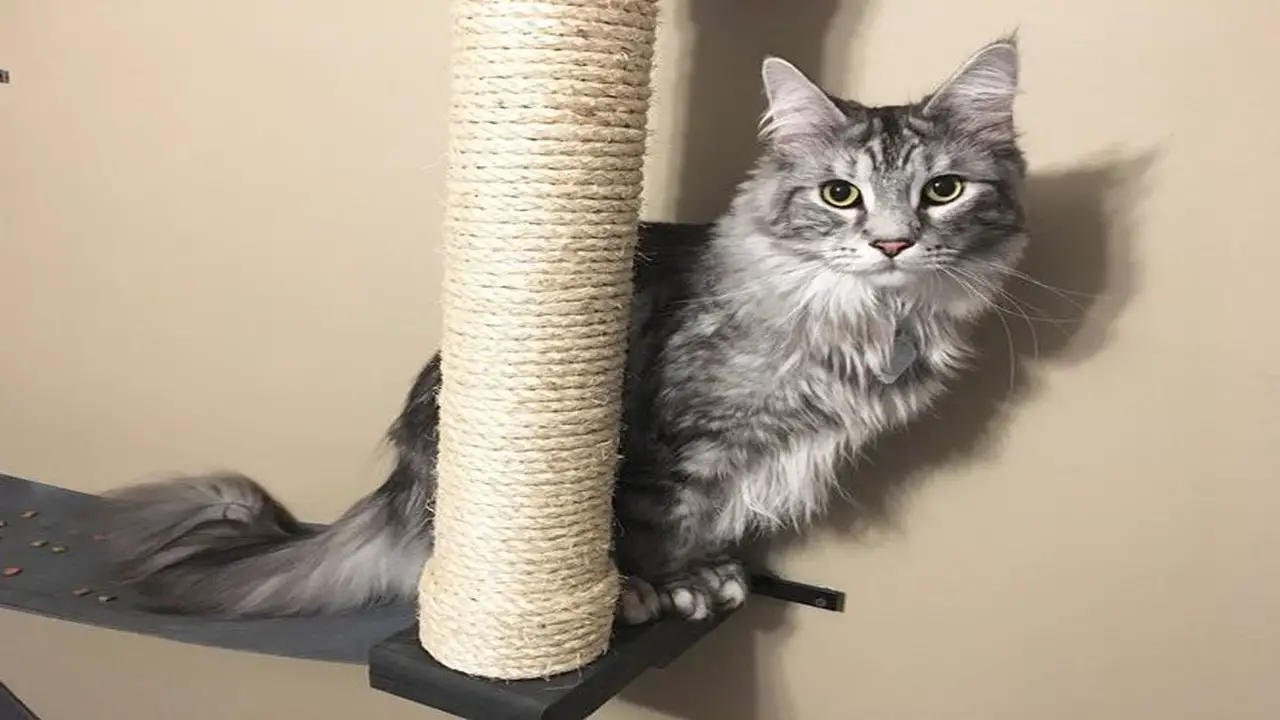
Cats rely on their tails for balance while jumping and climbing, using them as a counterweight. Beyond balance, a cat’s tail also serves as a means of communication. Tail movements can convey emotions and moods, such as fear or contentment.
When frightened, a cat’s tail may puff up, while a slowly wagging tail indicates relaxation. Additionally, cats may wrap their tails around objects or even humans to show affection. The cat’s tail is crucial in maintaining balance and expressing feelings.
Why Are Cats’ Tails So Long?
The tails of cats are lengthy for several reasons. They assist in maintaining balance, especially on narrow surfaces. The tail’s length can depend on the breed and body size of the cat. Tails also play a crucial role in communication and body language among cats, allowing them to interact with other felines effectively.
Furthermore, a cat’s tail is essential for hunting and catching prey. Using their tails to stabilize themselves, they can make swift movements and sudden changes in direction while pursuing their prey. Overall, the tail is a vital part of a cat’s anatomy, serving multiple purposes beyond being aesthetically pleasing.
How To Measure A Cat’s Tail Length?
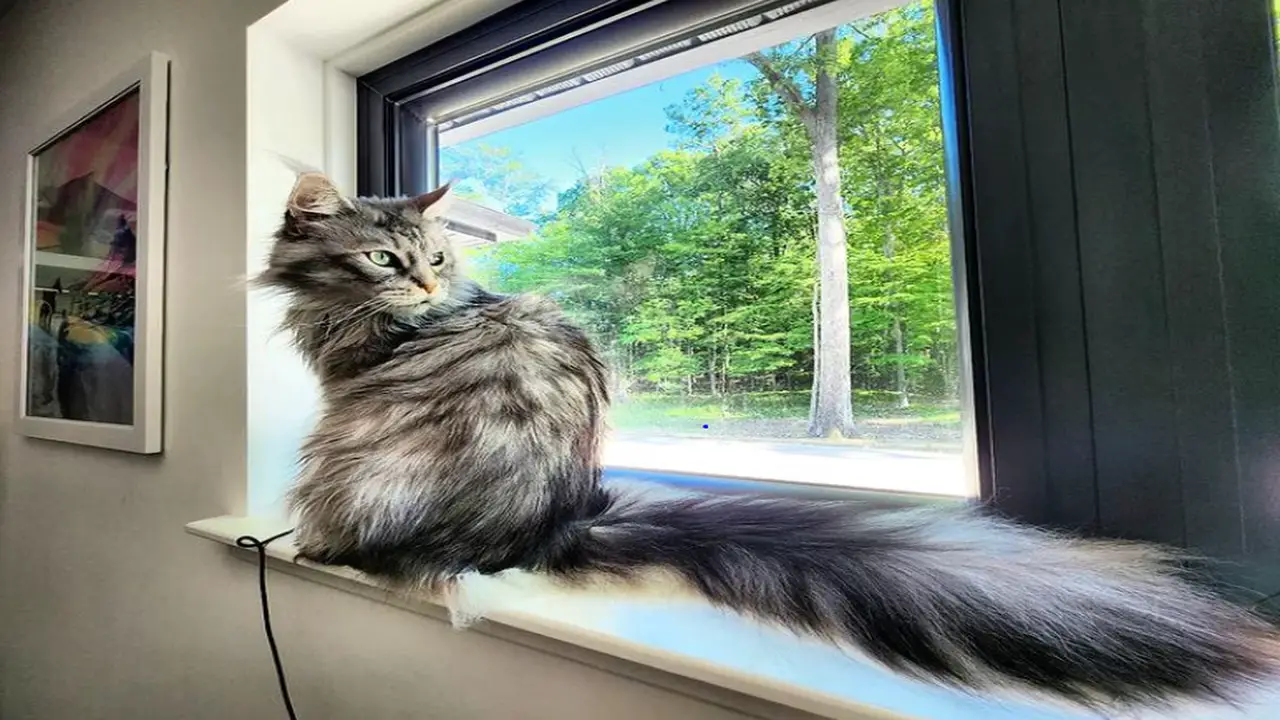
Measuring a cat’s tail length involves using a ruler or tape measure to gently measure from the base of the tail to the tip. Ensuring the cat is comfortable and relaxed during the measurement process is essential.
It is worth noting that tail length can vary within the same breed, so taking multiple measurements will help provide an accurate average. Additionally, it’s crucial to be mindful of your cat’s reaction and stop if they become agitated or uncomfortable during the measuring process.
Beyond The Average Exceptionally Long And Short Cat Tails
Cat tails come in various lengths, with some cats having exceptionally long or short tails. A cat’s tail length is determined by genetics and breed characteristics. For example, breeds like the Maine Coon have long and fluffy tails that are a defining feature of their breed. On the other hand, breeds like the Manx and Bobtail have naturally short or even no tails. These variations in tail length can impact a cat’s balance and communication, playing a role in its behaviour.
Record-Breaking Long Tails In Cats
Some cats hold records for having the longest tails in the world. These record-breaking cats surpass the average cat tail length of around 11 inches. Cygnus Regulus Powers, a Maine Coon, has a tail measuring over 17 inches long. Another notable cat with a long tail is Maru, a Japanese Bobtail whose tail measures almost 17 inches. These cats’ tails are significantly longer than the average cat’s tail length.
Notable Breeds With Short Tails
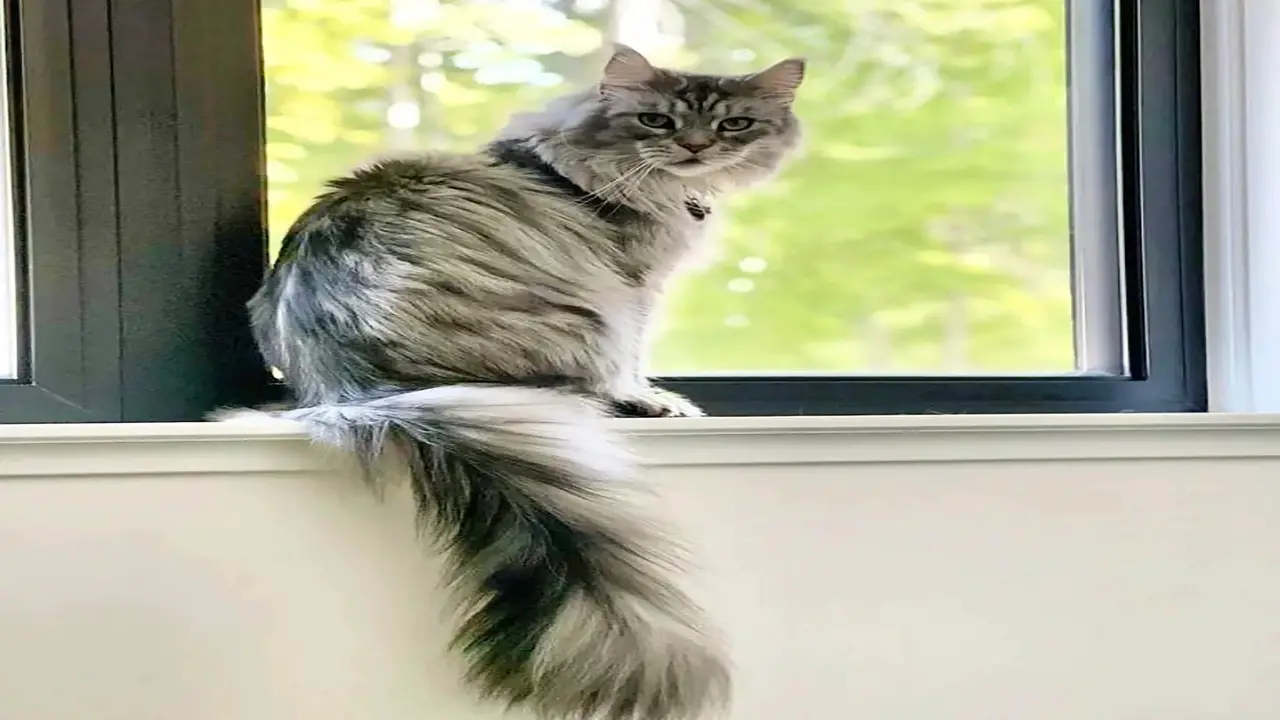
Several cat breeds are known for their naturally short tails, showcasing the range of tail lengths found among different breeds. Although some cats may have a small stub, the Manx breed is famous for its taillessness. The American Bobtail and Japanese Bobtail breeds also have naturally short tails. Breeds like the Siamese and Egyptian Mau may have shorter tails than other breeds, further highlighting the diversity in cat tail length.
Can Cats Live Normally Without Tails?
Although tails play an important role in balance, communication, and body language for cats, tailless cats like the Manx have adapted to lead normal lives without them. These cats compensate for the absence of a tail by relying on their hind legs and body movements.
Tailless cats have developed strong hindquarters that enable them to jump, climb, and interact just like any other cat. While it may be a unique physical characteristic, it does not hinder their ability to live a happy and healthy life.
The Impact Of Tail Loss On A Cat’s Life
Cats can experience tail loss due to accidents, injuries, or medical conditions. Initially, this can affect their balance, but cats are remarkably adaptive. Without a tail, they rely more on their hind legs for balance and navigation.
Additionally, tailless cats communicate through body language, vocalizations, and other cues. Despite the absence of a tail, cats can still lead fulfilling lives. Their ability to adapt and compensate for the loss allows them to navigate their surroundings and interact with others effectively.
How Does Tail Length Affect A Cat’s Behavior?
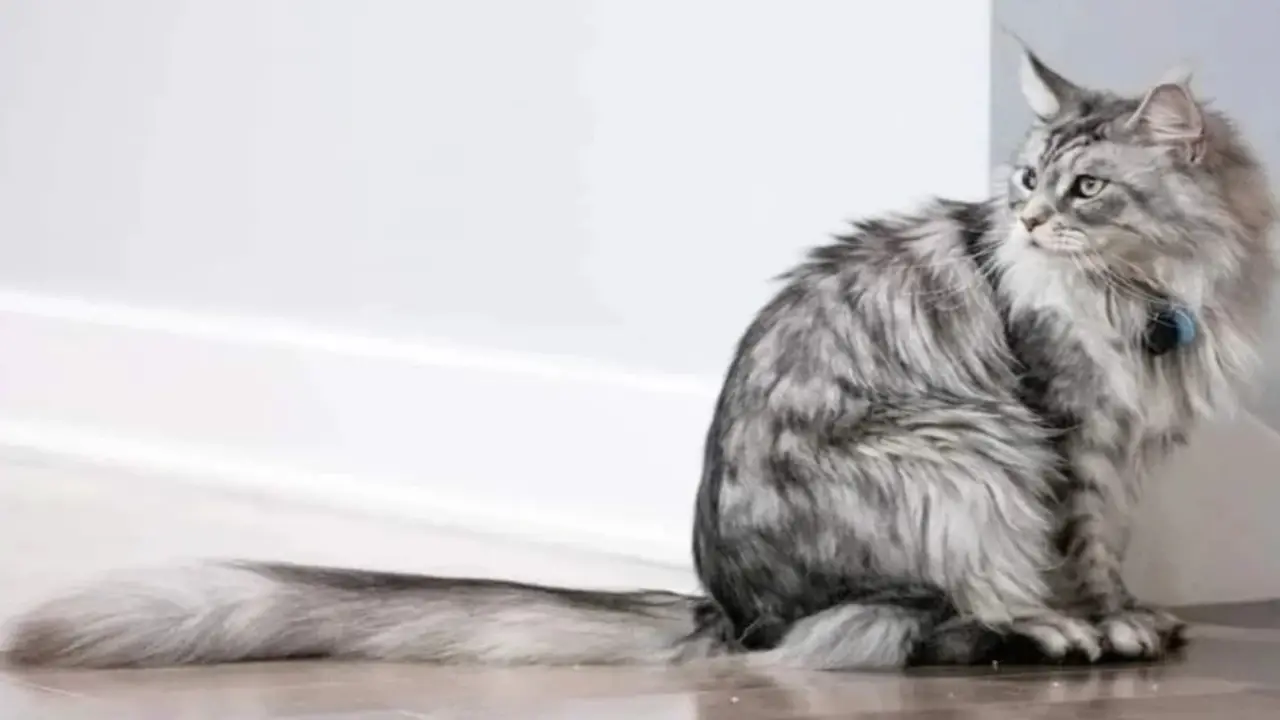
The length of a cat’s tail can greatly impact its behavior and communication. Longer tails provide balance and aid in navigating narrow surfaces while also serving as an expressive tool for emotions like happiness, fear, or aggression. Cats with shorter or no tails may rely more on body posture and facial expressions for communication. Tail length plays a role in interactions with humans and other animals.
Conclusion
Cat tail length varies greatly depending on various factors such as breed and genetics. Aesthetics determines the length of a cat’s tail and serves important functions in balance and communication. While there is an average cat tail length, some cats may have exceptionally long or short tails.
Tail length can impact a cat’s behavior to some extent, but it does not necessarily affect its ability to live a normal life. It’s fascinating to explore the diversity in cat tail lengths and appreciate the unique characteristics of different breeds. Whether your cat has a long or short tail, what matters most is providing them with a loving and caring environment
Frequently Asked Questions
WHY IS MY CAT’S TAIL SO LONG
Cats have varying tail lengths, with the average being around 12 inches. The length can differ based on breed and genetics. A longer tail helps cats maintain balance and serves as a means of communication. Consult a veterinarian if you have concerns about your cat’s tail length.
DO CATS’ TAILS GROW LONGER
Cats’ tails do not continue to grow longer after reaching adulthood. On average, a cat’s tail length is around 9-10 inches, but it can vary based on breed and genetics. Some cats may have shorter or longer tails due to injury or genetic mutation.
WHICH BIG CAT HAS THE LONGEST TAIL
The snow leopard holds the record for the longest tail among big cats, measuring up to 3 feet long. Other big cats, like tigers and lions, also have long tails. On the other hand, the average length of a domestic cat’s tail is around 10 inches. A cat’s tail serves multiple functions: balance, communication, and temperature regulation.
WHAT IS THE AVERAGE LENGTH OF A CAT’S TAIL
The average length of a cat’s tail typically falls between 9 and 11 inches. However, it’s important to note that certain cat breeds may have longer or shorter tails than the average. A cat’s tail serves multiple purposes, including aiding in balance and communication with other cats. Additionally, a cat’s tail can indicate its mood, such as when it is puffed up to show fear or aggression.
WHAT IS THE AVERAGE LENGTH OF A CAT’S TAIL IN CM
The average length of a cat’s tail can vary depending on the breed and individual cat. On average, a cat’s tail can range from about 25 to 30 centimeters in length. However, it’s important to note that there can be variations within this range, with some cats having shorter or longer tails.

Aquarium passion is all about connecting with the aquatic life and providing education to the public on the importance of these creatures. We showcase a wide variety of marine life through our exhibits as well as working with schools to provide unique learning opportunities for students of all ages.








